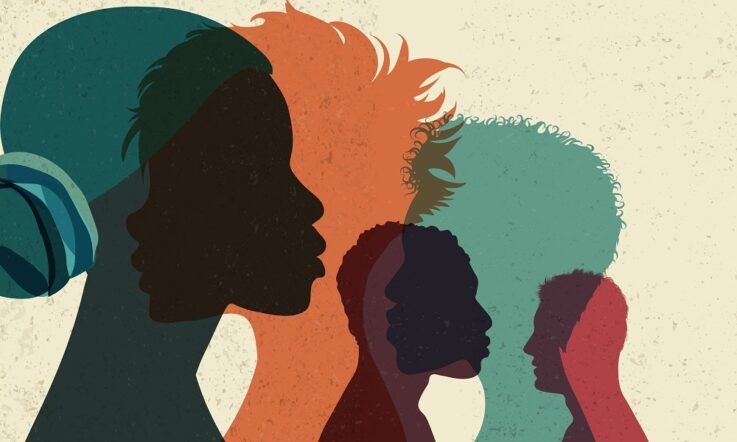Thanks for tuning in to this episode of Teacher Staffroom, where we catch you up on the latest evidence, insight, and action in education. I'm Dominique Russell.
At Teacher, we share useful evidence- and research-based resources to help you improve your skills and practice – whether it be research news or sharing the outstanding work that’s going on in schools. Recently, we’ve shared some stories on teachers seeking professional learning opportunities, teachers being inspired after attending a professional learning event, and what the research says about opportunities for future professional learning.
In today’s episode I’m going to get you up to speed on some of these stories, and also some more of my highlights from content we’ve recently published in case you might have missed it. And, like all episodes of Teacher Staffroom, I’ll be posing some questions throughout the podcast, so feel free to pause the audio as you go, gather some colleagues, and discuss together how these stories might be relevant to your school context. Let's jump in.
The first story I’d like to bring you is from Tasmania, where early-career teacher Ruby Lyons-Reid has been awarded a professional learning scholarship for her use of digital resources to engage students in learning about First Nations histories and cultures.
She’s going to be using the fund to undertake professional learning on the topic of First Nations curriculum leadership and culturally responsive planning. Ruby teaches at Tasmanian eSchool, the state’s distance education provider. In the article, she shared some of the ways she’s found success in using digital resources to engage students in learning about First Nations histories and cultures in her career so far.
There was one example in particular that stood out to me that I’d like to highlight with you here, where Ruby shares how she was able to conduct a virtual excursion with her students. Here’s what Ruby had to say:
We trialled a few different technologies and approaches before the excursion. In the end, I used an iPad on a tripod to film the excursion live in the museum and students joined through our virtual BlackBoard Collaborative classroom. This allowed students to ask questions in real time, view cultural objects up close, learn from a knowledgeable First Nations guide, and to engage with concepts and content in a more real and engaging way.
Ruby also shared how she supports students to enrol in online competitions and a number of other resources she utilises. If you’d like to read the full article, I’ll place a link to it in the transcript of this podcast episode, available at our website, teachermagazine.com, underneath the podcast tab. I’ll also place all of the other links you might need for other pieces of content I’m going to highlight in this episode.
So, this first story about Ruby Lyons-Reid brings me to a question for you to think about. In what ways have you utilised digital resources in your classroom so far this year? Have you facilitated engagement in external resources, like online competitions? Is there room to try something like this during this term?
Sticking to the digital world for now, and the next story I’d like to highlight with you looks at new research that’s being conducted to see how the English curriculum can be adapted to complement traditional writing tasks with more contemporary forms of digital writing.
We spoke with Dr Lucinda McKnight from Deakin University, who is the lead researcher for this study, to find out why learning about digital writing is important for students, and some potential challenges for implementing it in the classroom. She says she hopes the research findings will help inform professional learning activities for teachers in the future.
Here is how Lucinda described what digital writing tasks are:
It might be things like writing an email, texting, making a TikTok video, writing a blog... participatory, social kinds of writing. But also bringing in those other kinds of skills – framing video, filming, editing – all those things that we’re really conceptualising now as forms of digital writing. [It is] multi-modal writing that involves bringing together these different resources, curating them, managing them, seamlessly combining them, and then being able to reflect critically on the process as well.
The three-year project also aims to understand how teachers are currently conceptualising digital writing in their classrooms – so, in other words, what do they think digital writing is and how are they already teaching it. And the study also hopes to understand how teachers can be supported to teach digital writing moving forward.
So, thinking about this research, here are some questions for you to have a think about. As an English teacher, how are you using digital media in the classroom to engage students in thinking about texts in different ways? Are you familiar with the types of digital platforms students already engage with, and those that may be useful for their future careers?
You might have also seen recently that we published the first video in a new series by teacher librarian Mali Jorm. The video introduces a targeted program that is embedded at Mali’s school, Melba Copeland Secondary School in Canberra, called The Three Spheres of Library Skills.
This program scaffolds students to achieve success in the three core areas of library skills: readers, researchers, and thinkers, and in this first video Mali looks at the readers sphere. They share how schools can foster a learning environment where readers flourish; ideas for giving students the time to read; how to model reading as positive activity; and ideas for making time for peer sharing of books. Here’s a short clip from Mali – but you can find the full video on our YouTube channel. You can find our channel by searching on YouTube for ‘Teacher ACER’.
Students need regularly scheduled time to simply read. Reading is a time-consuming activity, and we need to prioritise time for it during the school day. This can look like regular silent reading; or drop everything and read time; or scheduled time in a library or classroom. Staff should model that reading is a pleasurable activity and that it is a priority in our personal lives. This can look like talking about books that you are reading outside of work; modelling reading aloud to students; and actively participating in silent reading with your class.
So, that clip there brings me to a couple of questions for you to reflect on. Mali says teachers can model that reading is an enjoyable activity by talking about books that you are reading outside of work; modelling reading aloud to students; and actively participating in silent reading with your class. When was the last time you read a book for pleasure? Did you tell your students what you were reading, and why you were enjoying it? Do you bring your own reading material to school, so you can participate in silent reading time with your students?
Now, finally, to take a look at a two-part article series on a program that’s been implemented at Brigidine College in Indooroopilly, Brisbane, that came about after staff attended a professional learning event. Staff attended a summit where presenters spoke about reframing teacher education, and this prompted them to brainstorm ways which they could better support the pre-service teachers conducting placements at the school.
This then led to the development of a Pre-service Teacher Fellowship Program, and in the first article we spoke with Assistant to the Principal, Professional Teaching and Learning, Allison Johansen, to find out how they developed it.
In the second article, Allison shared the details of the Pre-Service Teacher Fellowship Program and its positive impact. Everything from how the program works and who it involves, to how it’s monitored for effectiveness is covered. There is one point I’d like to highlight with you though that stood out to me, and it’s about how they ensure flexibility in the program for pre-service teachers. Here is what Allison had to say:
We have increased the flexibility of the program. Previously, we had a suggested timetable (like university), suggesting how much and when pre-service teachers should teach. We removed this during the first year to ensure the flexibility of the program. This has allowed Fellowship pre-service teachers to cater to the needs of their families better – for example, dropping their own children at school and start after our first class, and leave before the end of the day to retrieve their children.
So, that quote from Allison brings me to some final questions to think about. Support available to staff feeds into successful recruitment and retention strategies. So, how do you support pre-service teachers and early career teachers at your school? Do you gather feedback on the effectiveness of the programs available?
That's all for this episode, and now you’re all caught up on the latest evidence, insight and action. Links to all the content and the resources I’ve mentioned will be in the transcript of this podcast available over at our website, teachermagazine.com.
Subscribe to our podcast channel wherever you get your podcasts from, so you can be notified of any new episodes as soon as they land. If you want to keep listening now, you can access the 200+ episodes already in our archive. And, while you’re there, we’d love if you could rate and review us.



